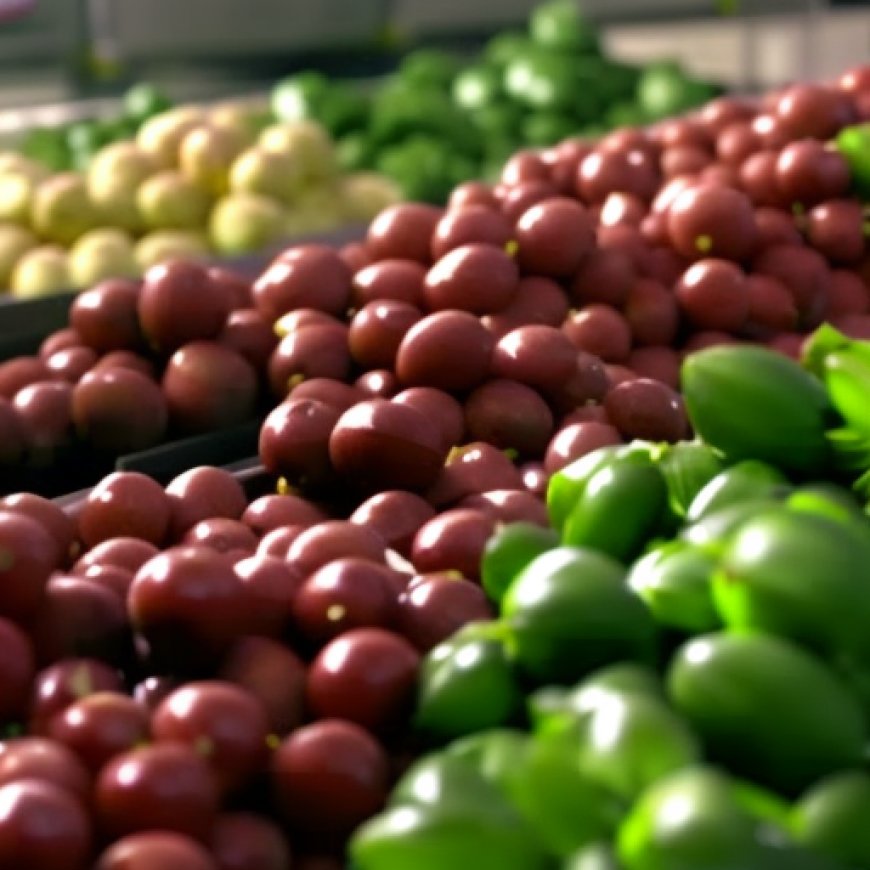Opening New Export Markets for Iowa Farmers and Producers through Cold-Chain Infrastructure Investments
Opening New Export Markets for Iowa Farmers and Producers ... Carroll Daily Times Herald


Food Production and the Need for Sustainable Development Goals (SDGs)

The Challenges in the Food Production Industry
The food production industry faces numerous challenges, including high input costs, regulatory barriers, economic uncertainty, and supply-chain bottlenecks. These challenges have made farming even more difficult, impacting the profitability of producers. However, in Iowa, despite facing attempts by other states to regulate their farming practices, farmers remain resilient and dedicated to feeding not only our country but also the world. As a member of Congress, it is my priority to develop policies that lower costs for producers and promote beneficial trade agreements to support our farmers.
Opening New Export Markets for Iowa Agricultural Goods
Through conversations with my 60-member Agriculture Advisory Board and engagements with local farmers and producers during my Feenstra Agriculture Tour, it has become clear that opening new export markets for Iowa agricultural goods is a top priority for our agriculture community. In 2021, Iowa exported over $14.3 billion worth of agriculture products, solidifying its position as the second largest exporter of agricultural goods in the country. Key exports included soybeans, corn, pork, and beef. The top markets for American pork were China, Japan, and Mexico, while the top markets for beef were Japan, South Korea, and China. These figures highlight the importance of maintaining existing trading partners and establishing new markets to ensure a resilient supply chain for Iowa producers.
The Issue of Food Waste and the Need for Infrastructure Development
One concerning trend in the export of perishable goods is the significant amount of food waste that occurs globally. Approximately one third of all food production worldwide, equivalent to nearly 1.3 billion tons of food, is lost to waste each year, resulting in a cost of approximately one trillion dollars. Developing countries face particular challenges due to the lack of cold-chain storage facilities necessary to preserve perishable foods like pork, beef, turkey, chicken, and specialty grains for consumption and transportation. This limitation in export infrastructure hampers the ability of Iowa producers to export their high-quality products worldwide. To address this issue and support our producers, I am dedicated to expanding into new and developing markets that have the necessary export infrastructure to facilitate the export of Iowa’s agricultural goods.
The FRIDGE Act: Promoting Infrastructure Development for Global Exports
To address the need for infrastructure development, I have introduced legislation called the Fortifying Refrigeration Infrastructure and Developing Global Exports Act (FRIDGE Act). This act aims to enhance infrastructure, including cold-chain storage, for shipping beef, chicken, turkey, pork, grains, specialty crops, and other perishable goods worldwide. The FRIDGE Act directs the U.S. Department of Agriculture to negotiate contracts for needs assessments, training, and technical assistance to support infrastructure construction in new and developing foreign markets.
Key Provisions of the FRIDGE Act
- Promoting infrastructure in the Foreign Market Development (FMD) program
- Authorizing funds of $1,000,000 annually from Fiscal Year 2024 to 2028 for export infrastructure, including cold-chain facilities
- Allocating any leftover funds to the main FMD program for the benefit of all producers and exporting organizations
In addition to the FRIDGE Act, I am a cosponsor of the Agriculture Export Promotion Act, which aims to double funding for the FMD and the Market Access Program (MAP). Both programs play a vital role in promoting Iowa agriculture exports in foreign countries and ensuring fair compensation for our farmers. I consider this legislation a top priority and hope to see it included in the Farm Bill or independently considered on the floor of the U.S. House of Representatives.
Expanding Export Infrastructure for Food Security and Trade Expansion
Expanding cold-chain storage and other essential exporting infrastructure will provide our producers with unrestricted access to new and developing global markets that are eager to purchase Iowa agricultural goods. The FRIDGE Act represents an important investment in trade expansion and food security, benefiting not only our producers but also millions of families in our country and around the world. While the Biden Administration may be hesitant to negotiate new trade agreements, it is crucial that we support our farmers and reduce our reliance on a limited number of export markets. By embracing the SDGs, particularly SDG 2 (Zero Hunger) and SDG 17 (Partnerships for the Goals), we can work towards a more sustainable and inclusive agricultural sector.
SDGs, Targets, and Indicators in the Article
1. Which SDGs are addressed or connected to the issues highlighted in the article?
- SDG 2: Zero Hunger
- SDG 8: Decent Work and Economic Growth
- SDG 12: Responsible Consumption and Production
- SDG 17: Partnerships for the Goals
2. What specific targets under those SDGs can be identified based on the article’s content?
- SDG 2.3: By 2030, double the agricultural productivity and incomes of small-scale food producers, in particular women, indigenous peoples, family farmers, pastoralists, and fishers, including through secure and equal access to land, other productive resources and inputs, knowledge, financial services, markets, and opportunities for value addition and non-farm employment.
- SDG 8.3: Promote development-oriented policies that support productive activities, decent job creation, entrepreneurship, creativity, and innovation, and encourage the formalization and growth of micro-, small- and medium-sized enterprises, including through access to financial services.
- SDG 12.3: By 2030, halve per capita global food waste at the retail and consumer levels and reduce food losses along production and supply chains, including post-harvest losses.
- SDG 17.17: Encourage and promote effective public, public-private, and civil society partnerships, building on the experience and resourcing strategies of partnerships.
3. Are there any indicators mentioned or implied in the article that can be used to measure progress towards the identified targets?
- Indicator for SDG 2.3: Agricultural productivity and incomes of small-scale food producers
- Indicator for SDG 8.3: Job creation, entrepreneurship, and growth of micro-, small-, and medium-sized enterprises in the agriculture sector
- Indicator for SDG 12.3: Reduction in food waste and losses along production and supply chains
- Indicator for SDG 17.17: Number of effective public-private partnerships established to support agricultural exports and infrastructure development
Table: SDGs, Targets, and Indicators
| SDGs | Targets | Indicators |
|---|---|---|
| SDG 2: Zero Hunger | Target 2.3: By 2030, double the agricultural productivity and incomes of small-scale food producers, in particular women, indigenous peoples, family farmers, pastoralists, and fishers, including through secure and equal access to land, other productive resources and inputs, knowledge, financial services, markets, and opportunities for value addition and non-farm employment. | Agricultural productivity and incomes of small-scale food producers |
| SDG 8: Decent Work and Economic Growth | Target 8.3: Promote development-oriented policies that support productive activities, decent job creation, entrepreneurship, creativity, and innovation, and encourage the formalization and growth of micro-, small- and medium-sized enterprises, including through access to financial services. | Job creation, entrepreneurship, and growth of micro-, small-, and medium-sized enterprises in the agriculture sector |
| SDG 12: Responsible Consumption and Production | Target 12.3: By 2030, halve per capita global food waste at the retail and consumer levels and reduce food losses along production and supply chains, including post-harvest losses. | Reduction in food waste and losses along production and supply chains |
| SDG 17: Partnerships for the Goals | Target 17.17: Encourage and promote effective public, public-private, and civil society partnerships, building on the experience and resourcing strategies of partnerships. | Number of effective public-private partnerships established to support agricultural exports and infrastructure development |
Behold! This splendid article springs forth from the wellspring of knowledge, shaped by a wondrous proprietary AI technology that delved into a vast ocean of data, illuminating the path towards the Sustainable Development Goals. Remember that all rights are reserved by SDG Investors LLC, empowering us to champion progress together.
Source: carrollspaper.com

Join us, as fellow seekers of change, on a transformative journey at https://sdgtalks.ai/welcome, where you can become a member and actively contribute to shaping a brighter future.







